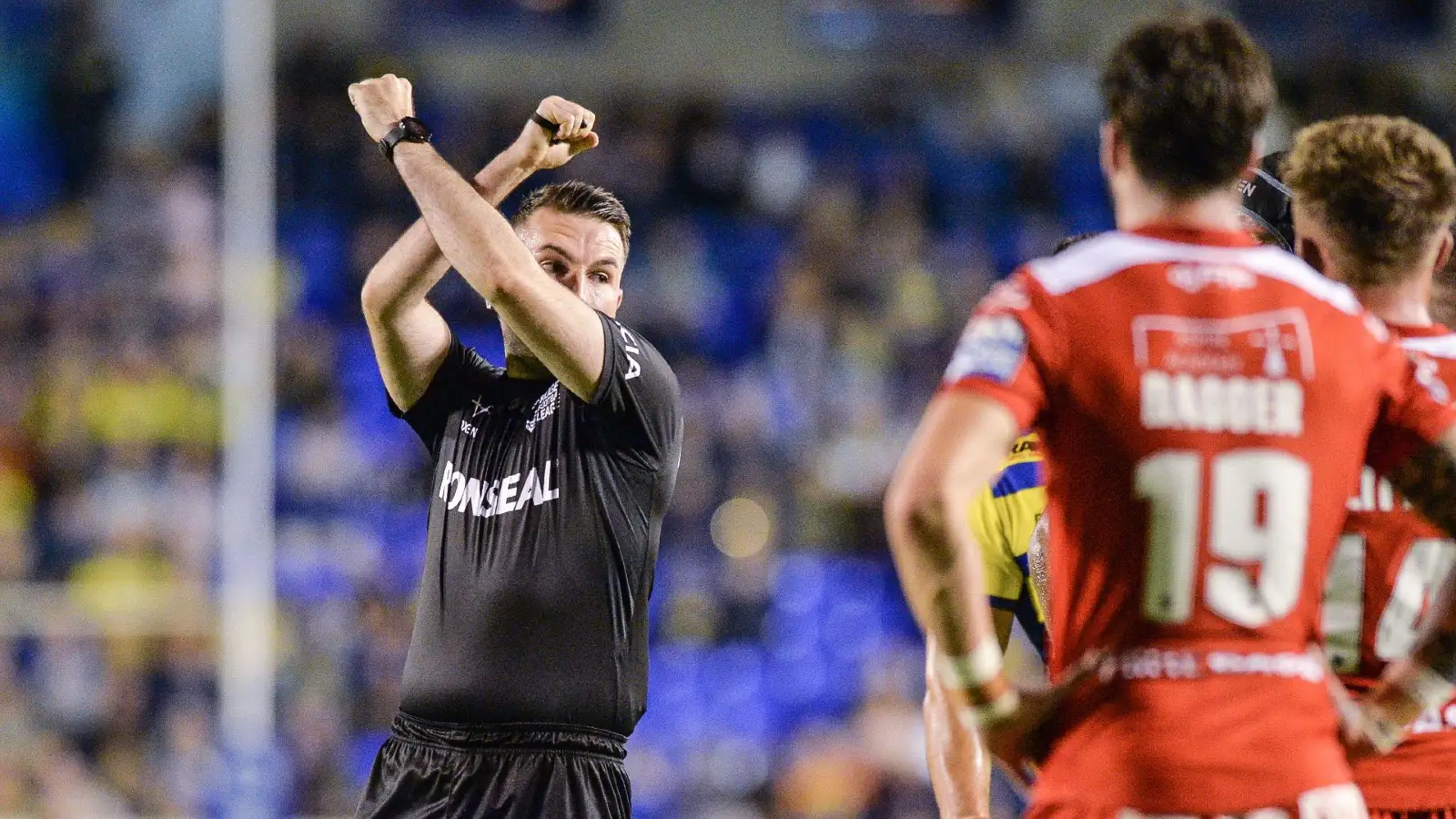Has the ‘on report’ system been made redundant by forensic match review panel?

The disciplinary hasn’t quite overshadowed the Super League season as it did last, but it still prompts several of the big talking points each week.
The so-called hip-drop tackle has been attracting attention recently, with a hefty five-match ban handed down to Morgan Knowles for a tackle made in St Helens’ derby with Wigan.
Several others have been cited and resulted in bans, including for Warrington’s Joe Philbin and Paul Vaughan, plus Wigan’s Morgan Smithies.
It can sometimes feel there are patterns where certain offences become highlighted more often than previous, which often has people claiming there is a clampdown on whatever that may be.
But perhaps it’s a consequence of the now forensic match review panel, who look at every tackle made and decide whether any foul play has occurred.
That means if an incident is completely missed on the pitch, the match review panel can step in and charge a player with an offence.
In many ways, it makes the ‘on report’ function almost redundant – because every tackle is being reviewed anyway. So if a referee sees something and doesn’t dish out punishment on the field, it will still be looked at regardless of whether they put it on report.
While player safety and welfare is paramount, me being old fashioned would sooner that once the 80 minutes is up, what’s happened has happened, and if it hasn’t been noted by the referee – either by a penalty, card or by placing it on report, it shouldn’t be cited.
There could be caveats of course, for the most serious offences, or even give clubs the option to ‘grass up’ their opponents if they can find evidence of foul play, but that may still be against the spirit of the game.
The forensic analysis creates plenty of debate, but also contradictions.
The first incident in this video resulted in a four match suspension. The second incident in this video resulted in a five match suspension.
Something has gone wrong for these incidents to be seen as near-equivalent. pic.twitter.com/C6aFhjkJAk
— The Tryline 🏉 (@TrylineUK) April 19, 2023
Hip drops and the match review panel
Former Super League referee Ian Smith provided good insight in to hip drops and the match review panel on a recent episode of the Dockhouse Rugby podcast.
Smith said: “It’s had many names. Once it was called the ninja. It’s wrapping your legs around and bringing to floor.
“The Philbin one on Da Costa was a classic example. The player’s in front of him and he’s trying to grab the collar to drag him down to the floor, but because the player is going away they leave the floor and wrap their feet around to use the weight to drop to the floor. As soon as your feet leave the floor, it becomes reckless by nature.
“A tackle where the player is going away from you, because of the force and weight and drive of the player you can’t get him to the ground with your own momentum keeping your feet on the ground. And because you are being dragged along, you tend to lift your feet up and use your weight as the defender to drop. 9 times out of 10, that drop can land but many times you can drop on to the ankle or knee, in the case of Mike Cooper.
“You’re putting all the weight of your own hips on to the ankles of the ball carrier, and the risk to injury is massive.
“As soon as your feet leave the ground it becomes reckless. That’s why Morgan Knowles got a larger ban because he swung his legs.
“The match review panel will look at every single game in its entirety. Every single tackle will have different nuances. Does he lose height? What about the force? What about the mitigating factor of an injury? What about two plays in the tackle? What about three? What about ducking? What about an elbow? What about the injuries and there’s so many different things, there is no two tackles the same. So we’re trying to perfect an imperfect outcome if you like.
“I think the match review panel on the whole do a really good job, there’s a couple that I’ve disagreed with.
“You will never, no matter what you do, have some people who disagree. The match review panel have got to do what they do with honesty, integrity and do it within clear boundaries to get their outcome.”
Confusion around the hip drop tackle in the NRL
There have also been some high-profile instances of the hip drop tackle technique in the NRL.
A hip drop tackle is defined by the NRL as “dropping body weight on to an opponent’s legs in such a way as to constitute an unacceptable risk of injury.
NRL head of football elite competitions, Graham Annesley, told NRL.com: “Everyone’s confused by hip drops. Then they’re confused by the varying penalties given for hip drops. If that’s the confusion, then I don’t see why it’s not the same for high tackles.
“At times players concede a penalty for high tackles, sometimes it’s a sin bin, sometimes it’s a red card and sometimes they’re cited. Why do we have those outcomes? Because they’re all different, they all have their own attributes that make them less serious or more serious.
“I’m bemused by this confusion about why there are different penalties for hip drops. Some of these are not easy to pick up in live play. They may not be picked up during the game. They’re picked up by match review. That’s no different to crusher tackles or others.”
MORE: Jermaine McGillvary joins concerned voices demanding ‘disgraceful’ hip-drop tackles to be outlawed